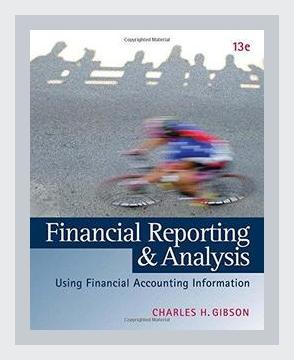Finance and AccountingFinancial Analysis
Here’s a summary of Charles H. Gibson’s “Financial Reporting and Analysis” (2004) structured to maximize different points and examples:
Introduction to Financial Analysis
Charles H. Gibson’s “Financial Reporting and Analysis” serves as a comprehensive guide to understanding and applying financial data for effective decision-making in business. The book delves into various aspects of financial reporting, evaluation, and applications, providing concrete examples and practical advice.
Chapter 1: Understanding Financial Statements
Gibson emphasizes that the foundation of financial analysis starts with a solid understanding of financial statements, namely the income statement, balance sheet, and cash flow statement.
Key Point: Balance Sheet Structure
– Example: The balance sheet is divided into assets, liabilities, and shareholders’ equity.
– Actionable Advice: Review the asset section to determine an organization’s liquidity and the equity section to understand ownership and financial leverage.
Chapter 2: Analyzing the Income Statement
This chapter focuses on the income statement, which provides a summary of the company’s performance over a period.
Key Point: Revenue and Expense Matching Principle
– Example: Matching revenues with related expenses to assess true profitability.
– Actionable Advice: Evaluate the timing of expenses in relation to revenues to ensure accurate profit measurement.
Chapter 3: Cash Flow Analysis
Cash flow statements offer insights into the company’s liquidity, ensuring it has enough cash to meet obligations.
Key Point: Operating, Investing, and Financing Activities
– Example: Cash flow from operating activities indicates how well the company generates cash from its core business.
– Actionable Advice: Assess the cash flow from operating activities to evaluate the sustainability of the company’s main operations.
Chapter 4: Ratio Analysis
Gibson explains various financial ratios that provide quick, yet comprehensive, evaluations of company performance.
Key Point: Liquidity Ratios
– Example: The Current Ratio (Current Assets / Current Liabilities).
– Actionable Advice: Use liquidity ratios to assess whether the company can cover its short-term obligations.
Key Point: Profitability Ratios
– Example: Return on Assets (ROA = Net Income / Total Assets).
– Actionable Advice: Calculate profitability ratios to determine how effectively a company is using its assets to generate profit.
Chapter 5: Understanding the Footnotes to Financial Statements
Footnotes are critical as they provide additional context to the numbers in financial statements.
Key Point: Accounting Policies and Changes
– Example: Companies often list their significant accounting policies and any changes in these policies in the footnotes.
– Actionable Advice: Scrutinize footnotes to understand any changes in accounting methods that could affect the comparability of data over time.
Chapter 6: Quality of Earnings
Gibson discusses how earnings quality can vary and the importance of discerning real earnings from accounting manipulations.
Key Point: Analyzing Red Flags
– Example: Sudden changes in inventory levels, receivables growing faster than sales.
– Actionable Advice: Conduct a thorough analysis beyond the face value of reported earnings to detect potential red flags indicating earnings manipulation.
Chapter 7: Forecasting Financial Performance
Forecasting helps in predicting a company’s future financial health and forming strategic decisions.
Key Point: Trend Analysis
– Example: Using historical data to identify consistent patterns in sales, expenses, and cash flow.
– Actionable Advice: Apply trend analysis to project future performance and create realistic financial forecasts.
Chapter 8: Credit Analysis
This chapter covers evaluating a company’s creditworthiness to decide on lending.
Key Point: Analyzing Debt Levels
– Example: The Debt-to-Equity Ratio (Total Debt / Total Equity).
– Actionable Advice: Utilize credit analysis to determine the viability of extending credit or making investments.
Chapter 9: Equity Analysis and Valuation
Equity analysis involves evaluating a company’s stock for investment purposes.
Key Point: Price-to-Earnings (P/E) Ratio
– Example: P/E Ratio = Market Price per Share / Earnings per Share.
– Actionable Advice: Compare a company’s P/E ratio with industry benchmarks to assess stock valuation.
Chapter 10: Assessing Corporate Governance
Gibson highlights the importance of understanding corporate governance in analyzing financial information.
Key Point: Board Composition and Independence
– Example: Boards with a higher percentage of independent directors are typically associated with better oversight.
– Actionable Advice: Evaluate the structure and composition of a company’s board for insights into governance quality.
Application in Real-World Scenarios
Scenario: Assessing Investment Opportunities
Example: Applying ratio analysis to examine potential investments’ liquidity, profitability, and market valuation.
Actionable Advice: Use a combination of liquidity ratios, profitability ratios, and valuation metrics to make well-informed investment decisions.
Scenario: Conducting Company Health Check-up
Example: Utilizing cash flow analysis to determine if a company can sustain its operations without additional financing.
Actionable Advice: Regularly review cash flow statements to manage liquidity proactively and foresee any financial distress.
Conclusion
In summary, Charles H. Gibson’s “Financial Reporting and Analysis” provides a structured approach to dissecting financial information, focusing on actionable insights and practical applications. Understanding balance sheets, income statements, cash flows, and footnotes, conducting ratio analysis, and assessing earnings quality are crucial for effective financial analysis. Consistently applying these principles can lead to better financial decision-making, whether in evaluating investments, managing business operations, or conducting credit analysis.
This summary encapsulates the richness of Gibson’s text, providing actionable advice and examples for each major point to aid in practical application.
